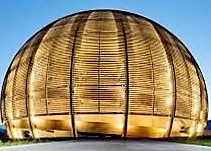Speaker
Description
By combining two unique facilities at GSI (Helmholtz Centre for Heavy Ion Research),
the fragment separator (FRS) and the experimental storage ring (ESR), the first direct measurement of a proton capture reaction of a stored radioactive isotope has been accomplished. The combination of sharp ion energy, ultra-thin internal gas target, and the ability to adjust energy of the beam in the ring enables precise, energy-differentiated measurements of the (p,$\gamma$)-cross-sections. Our new results provide a sensitive method for measuring (p,$\gamma$) and (p,n) reactions relevant for nucleosynthesis processes in supernovae, which are among the most violent explosions in the universe and are not yet well understood.
The cross section of the $^{118}$Te(p,$\gamma$) reaction was measured at energies of astrophysical interest. The heavy ions were stored with energies of 6 MeV/nucleon and 7 MeV/nucleon and interacted with a hydrogen jet target. The produced $^{119}$I ions were detected with double-sided silicon strip detectors. The radiative recombination process of the fully stripped $^{118}$Te ions and electrons from the hydrogen target was used as a luminosity monitor.
These measurements follow a proof-of-principle experiment which was performed in 2016 to validate the method on the stable isotope $^{124}$Xe [1].
An overview of the experimental method and preliminary results from the ongoing analysis will be presented.
[1] J. Glorius et al., Phys. Rev. Lett. 122, 092701 (2019)
